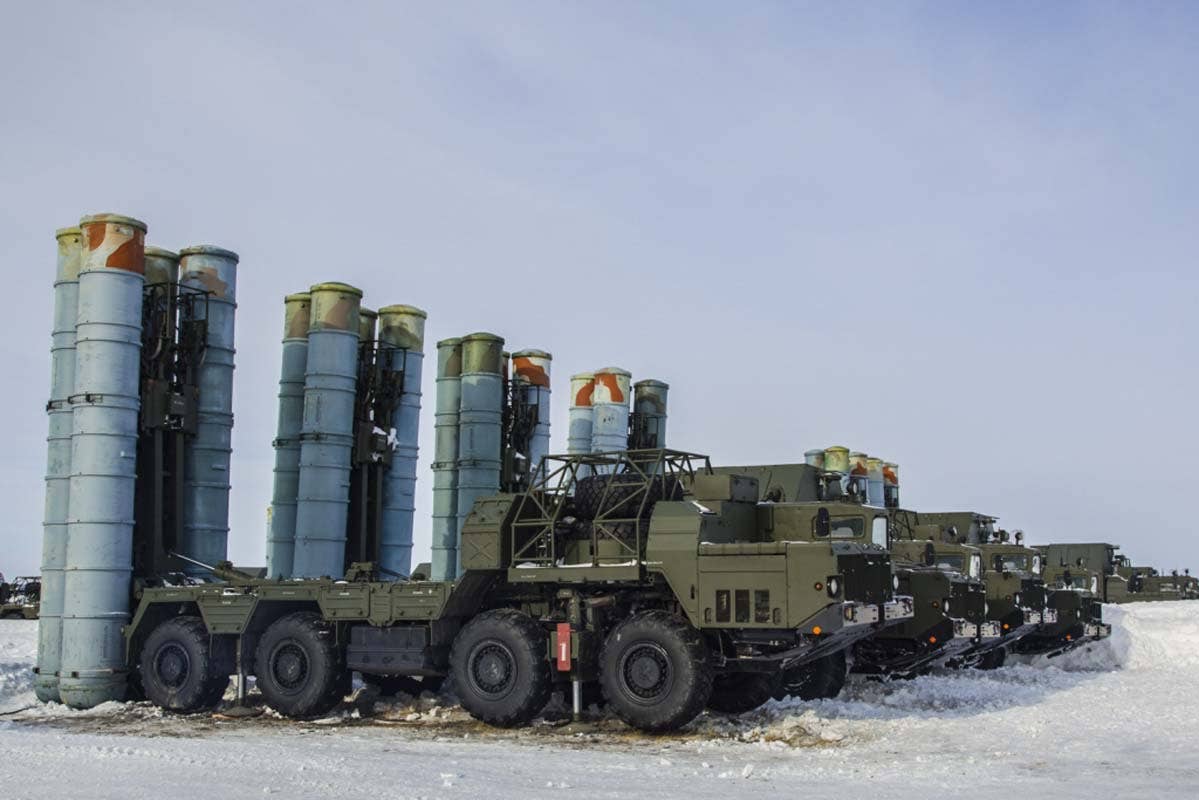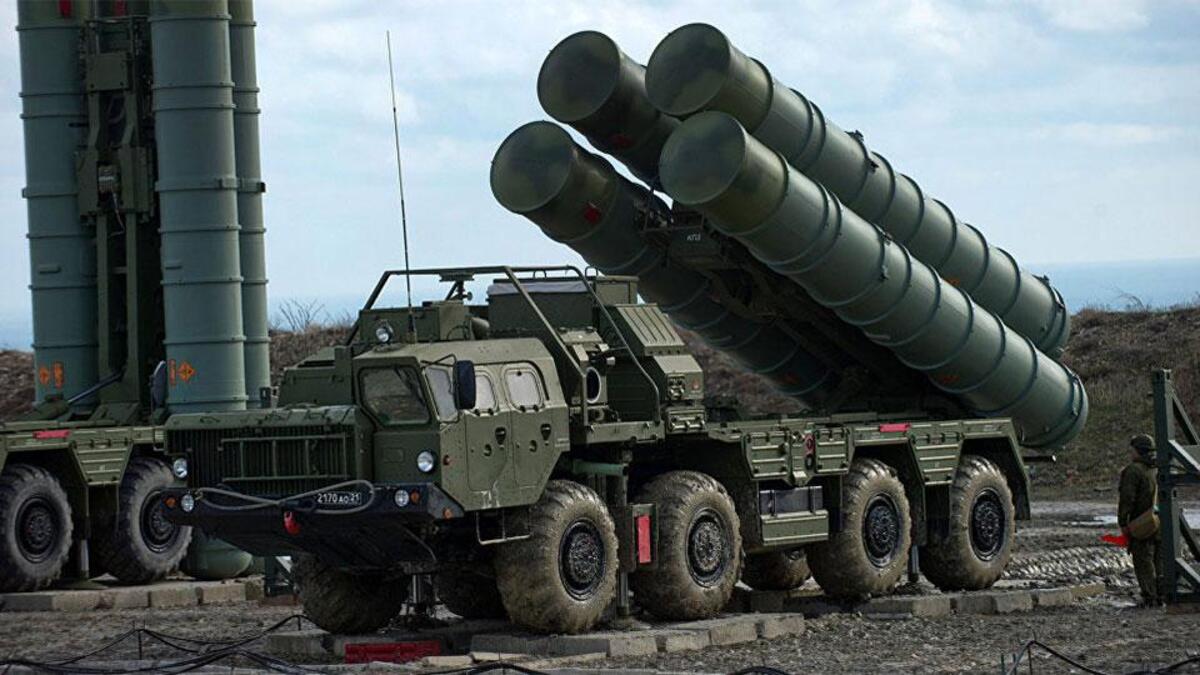A Ukrainian official recently claimed that Russia is using its S-300 long-range surface-to-air missiles to attack land targets in Ukraine.
The Governor of the Mykolaiv Oblast, Vitaly Kim, said on his Twitter handle on July 8 that Russian forces are conducting frequent ‘rocket attacks’ and using repurposed S-300 missiles equipped with GPS navigators to hit ground targets.
Kim further said that 12 missiles were fired by S-300s in a land attack role while noting that despite the missiles being equipped with GPS, they are inaccurate.
Mykolayiv. 10:50 AM, July 8
That rocket attacks have become more frequent. The orcs are remaking S-300 missiles, there have many if them, they put GPS on them to shoot at the ground, it is not accurate because of this. And they shoot 12 rockets each. pic.twitter.com/wpcNby1YIH
— Віталій Кім / Vitaliy Kim (@vitalij_kim) July 8, 2022
That said, Kim did not specify which version of the S-300 was used by the Russian forces for land attack purposes. Both Russia and Ukraine are known to operate the S-300P series on 8×8 wheeled chassis and the S-300V series that uses a tracked chassis in the ongoing Ukraine war.
While it may be surprising, the S-300 does have surface-to-surface capability, about which very little is known.
Past Instances Of Russian Military Using S-300 For Land Attack Roles
There have been documented instances in the past of S-300s used by the Russian military for ground attacks during exercises. Even the Belarusian army has reportedly practiced using the system to hit stationary ground targets.
The most recent instance of this was in May 2017, when the Air Defense Forces of Russia’s Eastern Military District (EMD) had used the S-300 system during an exercise in Khabarovsk to destroy targets imitating ‘armored vehicles of the enemy, as per a report by the state-owned Ria Novosti.

“The S-300 air defense system is capable, if necessary, of carrying out combat launches of missiles at ground targets, receiving their coordinates from reconnaissance units of the ground forces,” reported Ria Novosti.
Before this, Russia’s Southern Military District (SMD) had also referenced the ground attack capability of S-300 in a press release about a tactical exercise in 2011 of the aerospace defense brigade (VKO) at Ashuluk training ground in the Astrakhan region.
“Combat crews of the S-300 air defense system made 14 launches of guided missiles, hitting the Kaban-2 and Pishchal targets at a considerable distance, as well as ground targets in the conditions of the created situation, as close as possible to the combat one,” SMD said in a press release in August 2011.
Did China Destroy A US-Origin AWACS Aircraft Resembling Japan’s E-767? Satellite Images Hint So
Two months later, a more detailed account of the S-300’s ground attack role was provided by a Belarussian media outlet, Naviny, which reported that the developers initially incorporated the capability of “hitting stationary ground targets into the design of the S-300 air defense system adopted for service in 1979, as well as all its subsequent modifications.”
Back then, Belarus was known to operate the S-300PS version of the system, introduced in the mid-1980s, which included 5V55R missiles that had a maximum range of up to 90 kilometers against airborne targets.
Naviny reported the maximum engagement range of the system against ground targets as 120 kilometers.
The Naviny article described that for most of their flight path toward the target, the S-300 missiles rely on the onboard inertial system that uses the target’s coordinates before the missile launch and is updated during the flight via a radio link. In contrast, the missile uses semi-active radar homing in the terminal phase.
The ability to destroy ground targets is retained even in the S-400 air defense system, according to Naviny.
Surplus S-300 Rounds & Depleting Stockpile Of Precision Guided Munitions
It remains unknown why Russia is using the S-300 system to attack ground targets in Ukraine.
According to an expert who spoke to EurAsian Times, S-300 is one of the oldest air defense systems in the service because Russia might have a surplus of aging rounds that would be better suited against stationary ground targets than engaging airborne targets.
Russian S-300 air defence system was spotted in #Lugansk #Russia_Ukraine #Russia #Ukraine pic.twitter.com/mOm19bw1Gr
— خالد اسكيف (@khalediskef) July 4, 2022
“Russia considers the S300 an older, less capable SAM system now that the S400 has been fielded. That said, Russia most likely has a larger number of S300 missiles in their inventory, costs less, and can be used to target areas versus point targets,” Colonel (Retd.) David Shank, Former US Army Air Defense Artillery School Commander, told EurAsian Times.

He added that the Russian military could “run low on precision-guided surface-to-surface munitions, and therefore integrate the S300 missile against area targets that seem more vulnerable.”
Another reason why Russia could have decided to divert the S-300 from its air defense role to land-attack purposes is the incapacity of the Ukrainian Air Force to conduct air strikes, according to Shank.
“Russia may also be accepting risk with minimal Ukrainian Air Force activity (fixed-wing and rotary-wing); Ukrainian daily sorties have been extremely low…..single digits per day,” said Shank.
- Contact the author at tanmaykadam700@gmail.com
- Follow EurAsian Times on Google News




